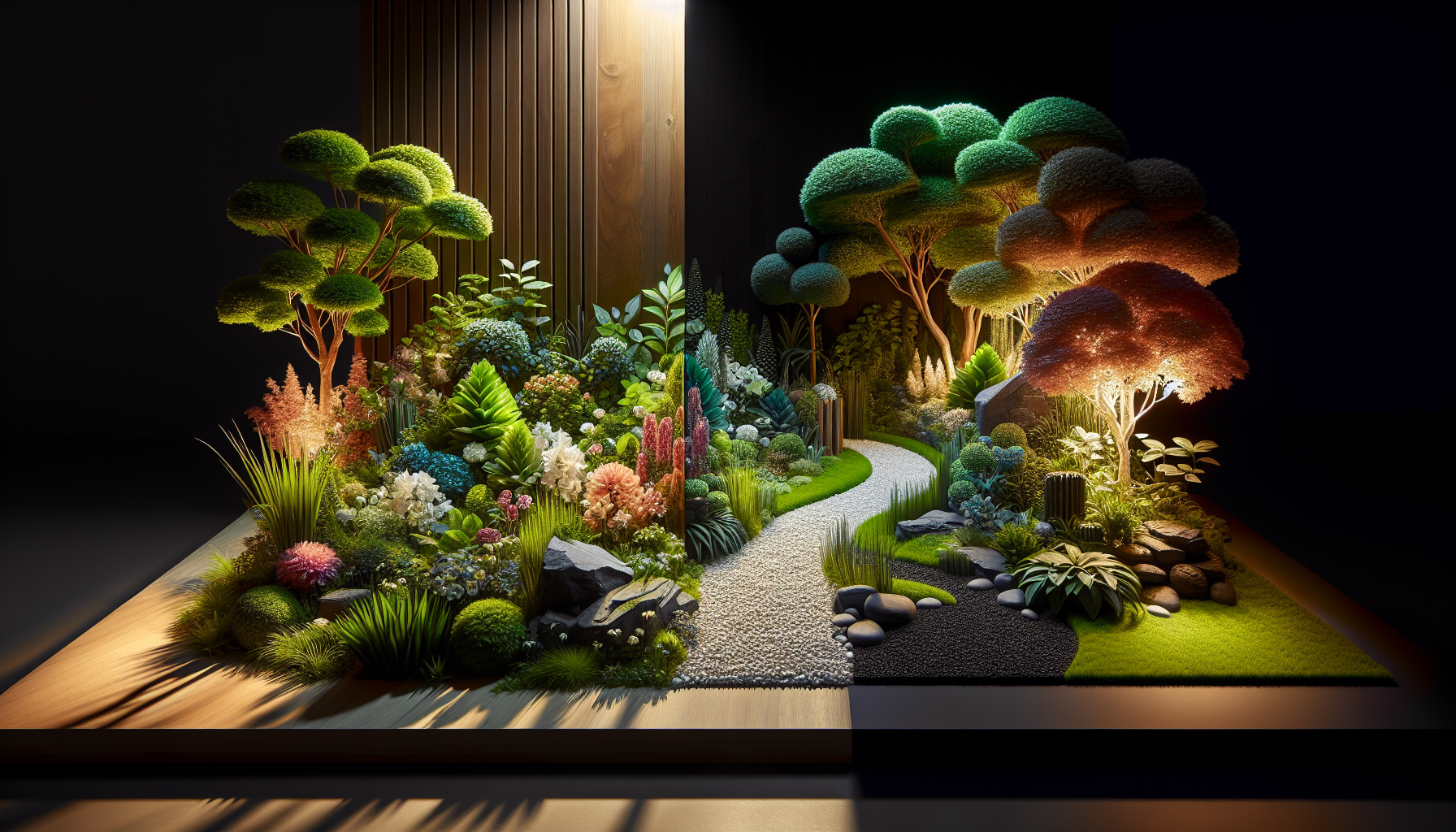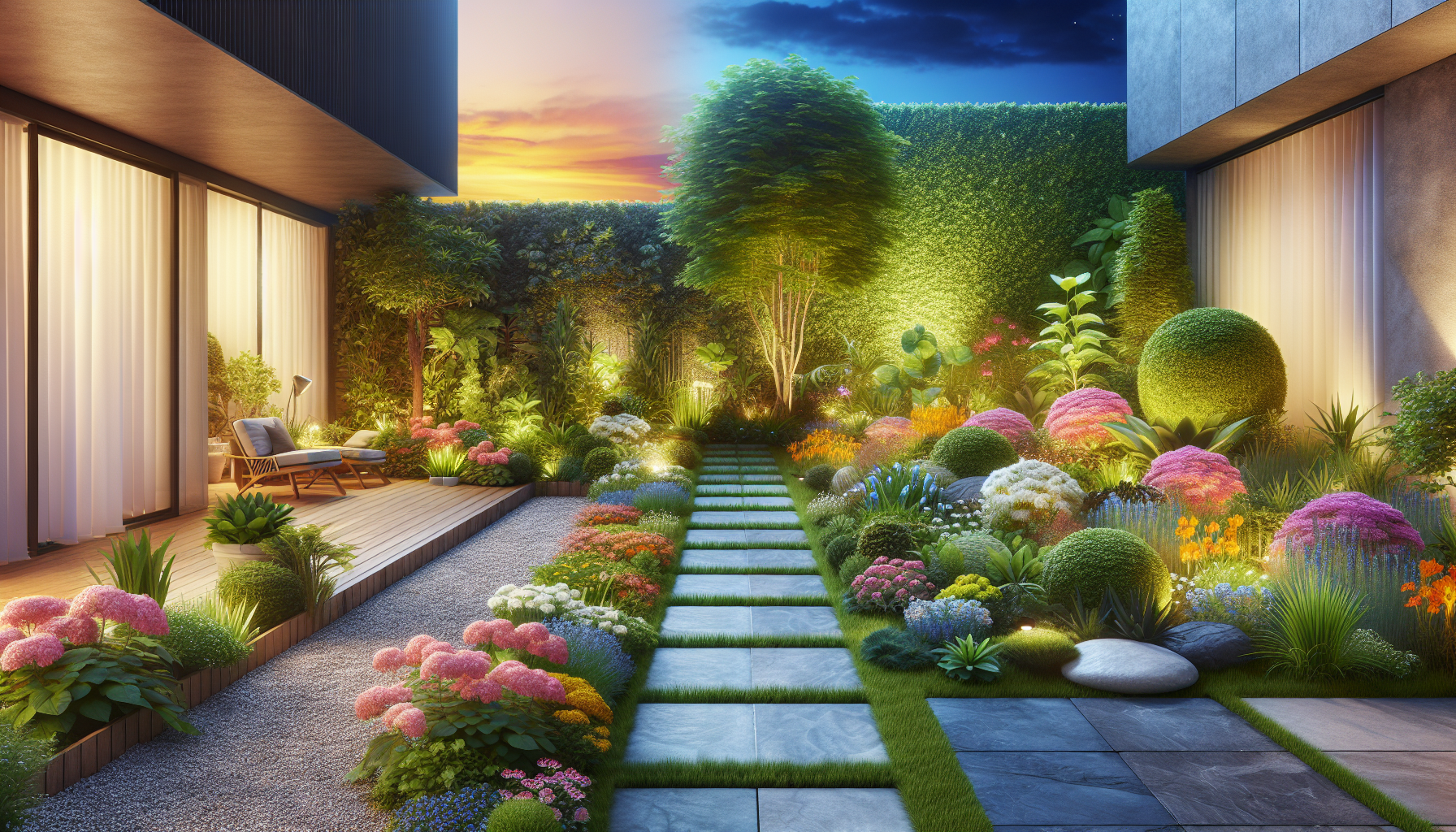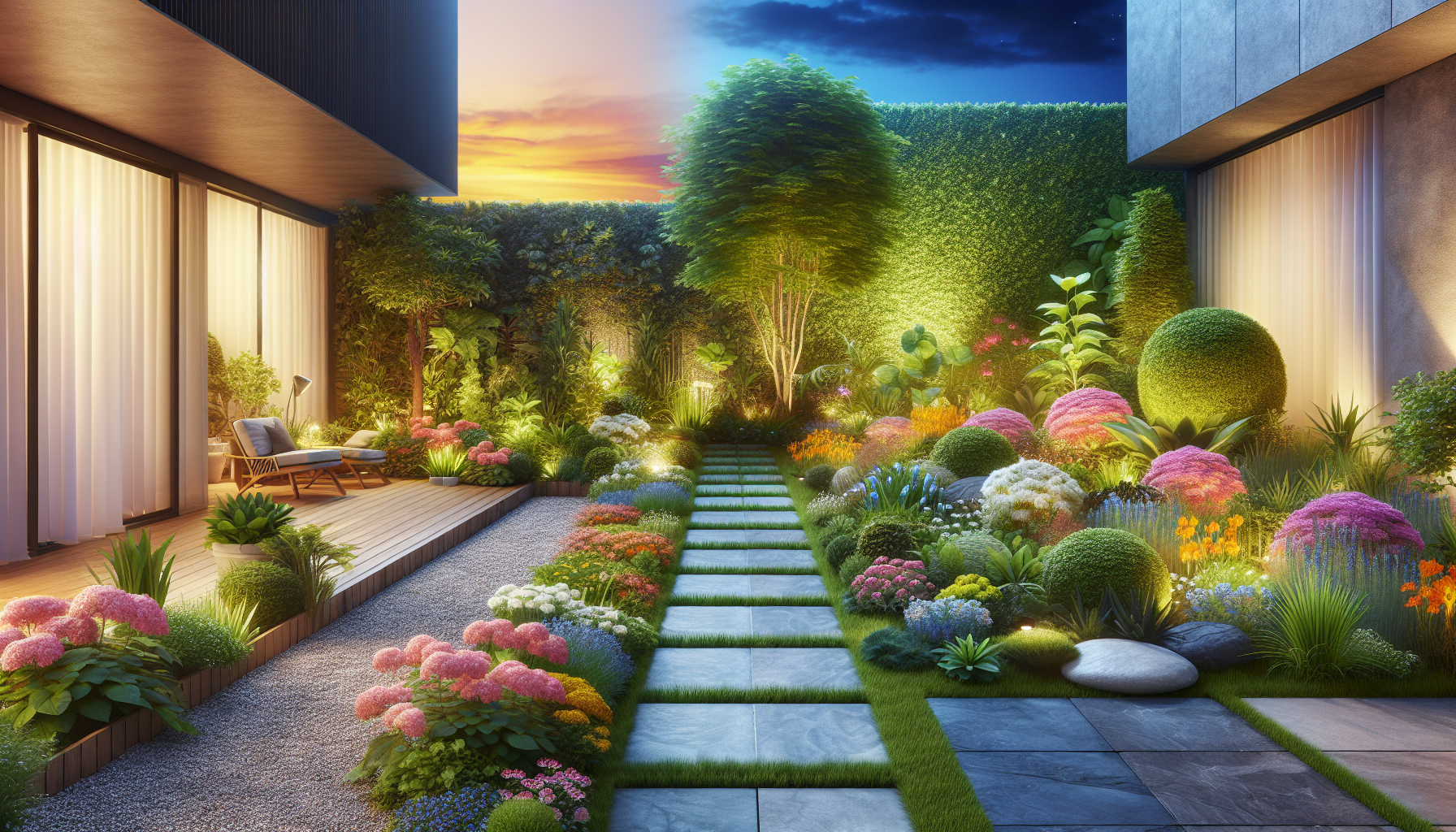What’s your outdoor space saying about you? Whether you live in a bustling city or a cozy suburb, the condition and design of your surroundings can say a lot about your lifestyle. Your neighborhood’s charm may reflect your taste and personality, from well-maintained parks to vibrant flower beds. You are likely to notice how the layout of sidewalks, patios, and gardens blends with the overall environment. Recognizing the difference between landscaping and hardscaping can help you enhance your outdoor space in ways that truly reflect your style.

Understanding Your Neighborhood Context
Imagine stepping out of your house and being greeted by the sights and sounds of your community. In bustling cities, you may see high-rises surrounded by small parks where families gather. In suburbs, tree-lined streets often lead to homes with spacious lawns and beautifully arranged gardens. The design choices can range from simple to elaborate, featuring a mix of green elements and hard surfaces that create functional living spaces outdoors.
In metropolitan areas, busy sidewalks and modern parks often showcase innovative designs. You might find a blend of concrete and green space, including sculptures or fountains that add character. Alternatively, in quieter neighborhoods, lush gardens, vibrant flowerbeds, and manicured lawns become focal points, enhancing the area’s appeal while providing retreat-like environments for residents.
Whether you reside in a rural setting or an urban landscape, the needs and preferences surrounding outdoor design vary widely. You might desire open spaces for family gatherings, cozy nooks for reading, or vibrant spots for entertaining friends. Understanding your specific context allows you to make informed choices about how to best utilize your outdoor space.
What Is Landscaping?
Landscaping focuses on the art and science of designing the outdoor environment using plants, soil, and other organic materials. The main aim is to enhance the beauty and functionality of your yard. Think of landscaping as the living aspect of your outdoor space.
Key Features of Landscaping
-
Plants: Trees, shrubs, flowers, and grass define landscaping. Each choice can influence the overall aesthetic and function of your yard.
-
Soil and Nutrients: Healthy soil is essential for plants to thrive. You may consider adding soil amendments to support plant growth.
-
Water Management: Plants need water, and a good landscape design includes irrigation systems or rain gardens to manage runoff.
-
Design Elements: Curved flower beds, pathways, and garden borders create structure and complement the seasonal changes in flora.
Advantages of Landscaping
-
Aesthetic Appeal: Lush greenery and colorful blooms can create a serene environment, boosting curb appeal and attracting wildlife.
-
Environmental Benefits: Plants can improve air quality, provide habitats for birds and insects, and absorb rainwater.
-
Increased Property Value: Well-maintained landscaping can enhance your home’s market value significantly.
Landscaping Tips
-
Choose Native Plants: Native plants often require less water and maintenance, making them a sustainable choice for your garden.
-
Plan for Seasons: Selecting plants that bloom at different times of the year can ensure that your garden remains vibrant throughout the seasons.
-
Incorporate Hardness Within Softness: Adding soft elements like flowers and shrubs can beautifully contrast with hardscape features, offering balance.
In summary, landscaping is all about bringing nature into your outdoor space, making it a more beautiful and functional part of your home.
What Is Hardscaping?
Hardscaping involves the use of non-plant materials to create functional outdoor spaces. It includes features like patios, walkways, and walls that provide structure to your landscape. Think of hardscaping as the backbone of your outdoor design.
Key Features of Hardscaping
-
Materials: Common materials include stone, brick, concrete, and wood. Each material can create different aesthetics and textures.
-
Structures: Elements such as decks, terraces, and retaining walls are vital components of hardscaping.
-
Layout: The arrangement of hardscaping features dictates the flow and functionality of your outdoor space, making it easier to navigate.
Advantages of Hardscaping
-
Durability: Unlike organic materials, hardscape elements withstand wear and tear over time, requiring minimal maintenance.
-
Defined Spaces: Hardscaping helps create distinct areas within your yard, such as seating zones, play areas, or dining spaces.
-
Low Water Usage: Hardscaping reduces the need for watering compared to expansive lawns or gardens, making it more water-efficient.
Hardscaping Tips
-
Plan Your Layout: Before starting, visualize how the hardscape features will work with your existing plants and structures.
-
Choose Complementary Materials: Ensure that brick, stone, or other materials used in hardscaping complement your home’s architecture.
-
Mix Texture and Design: Combining different materials and textures can create an appealing visual contrast in your outdoor area.
Hardscaping is vital for creating functional outdoor spaces that can be enjoyed year-round, adding both utility and style to your property.
Landscaping vs. Hardscaping: The Key Differences
While landscaping and hardscaping often work together to enhance outdoor spaces, they serve different purposes. Here are the primary distinctions:
| Feature | Landscaping | Hardscaping |
|---|---|---|
| Material | Organic (plants, soil) | Non-organic (stone, wood) |
| Purpose | Aesthetic and environmental | Functional and structural |
| Maintenance Needs | Requires regular care | Minimal upkeep |
| Longevity | Seasonal | Long-lasting |
| Water Use | Requires watering | Generally low water needs |
When planning your outdoor design, consider how landscaping and hardscaping can complement each other. The right balance between living elements and structural features creates an inviting and functional outdoor space.
Blending Landscaping and Hardscaping
Finding the harmony between landscaping and hardscaping can elevate your outdoor experience. A well-planned integration of the two can lend functionality, beauty, and interest to your space.
-
Transitions: Use pathways made of natural stone to guide the eye from a lush garden area to a cozy patio.
-
Focal Points: A stone bench surrounded by delicate flowers creates an inviting center point in your landscape.
-
Functional Design: Think about using retaining walls to create raised flower beds, combining both hard and soft elements to enhance accessibility and design.

Making a Choice: When to Choose Landscaping or Hardscaping
Deciding whether to focus on landscaping or hardscaping often boils down to your personal needs, preferences, and the specific requirements of your property.
When to Prioritize Landscaping
-
If you want to create a vibrant ecosystem for wildlife, landscaping should take center stage.
-
Choosing plants that blossom at different times of the year can maximize your yard’s beauty throughout the seasons.
-
If you have a larger space that lends itself to planting, maximizing greenery can absorb carbon, improve air quality, and invite natural beauty.
When to Focus on Hardscaping
-
If you need functional outdoor living areas, hardscaping is essential. Consider patios, walkways, and retaining walls for utility.
-
For spaces that require durability, such as driveways or outdoor kitchens, hardscaping materials are the best choice.
-
If you desire to minimize maintenance and water use, hardscaping may be more suitable.
Conclusion: Harmonizing Your Outdoor Space
The key to transforming your outdoor area lies in understanding the benefits and differences between landscaping and hardscaping. Both play critical roles in creating a balanced, functional, and beautiful outdoor environment that reflects your personality and lifestyle. By recognizing your space’s distinct needs, you can make informed decisions on the right mix to suit your preferences.
For all your hardscaping and outdoor needs, consider reaching out to Xclusive Home Services. Their expertise can help you design and install features that make your outdoor space shine. Whether you need a charming patio or intricate walkways, Xclusive Home Services can facilitate a seamless process tailored to your vision.
Feel free to contact them at:
Xclusive Home Services
14505 N. Hayden Rd., Ste. 101
Scottsdale, AZ 85260
Phone: (602) 341-5545
Email: management@xclusivehomeservicesco.com
Let your outdoor space tell your story, blending lush landscaping and sturdy hardscaping to create an inviting and functional retreat. Feel empowered to design a space that works for you and reflects your passion for the outdoors.


